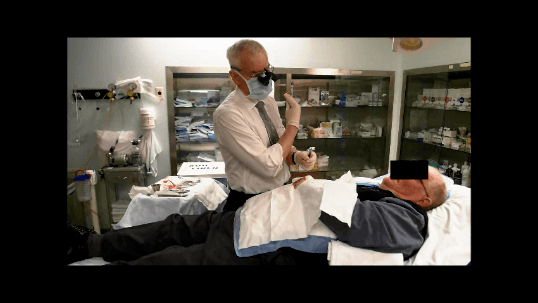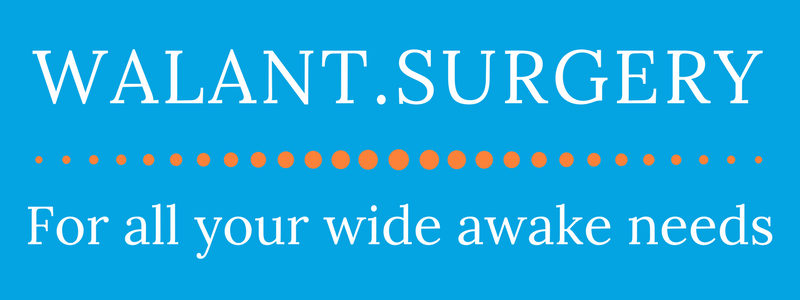
Awake patients are receptive patients
Why talking to patients during the operation will help to reduce your complication rate afterwards.
By Don Lalonde - Co-Founder of Walant.Surgery
Want to decrease your complication rates after surgery? Who doesn’t? What patient does not want to avoid trouble after surgery.
When patients are sedated or have a tourniquet on their arm, there's no point talking to them because they cannot hear and remember well. When they are asleep, what a waste of time talking to the nurses about the weather, or to the anesthetist about his holiday!
When patients are awake, tourniquet-free, pain-free, and just lying there listening to nice music, consider this;
They are your captive audience.
What a great time to spend talking to them about what to do and what not to do after surgery to make recovery sail beautifully!
During flexor tendon repair, I tell patients that the hand “is on strike” and only does one thing for 3-5 days after surgery until I see them again. “It stays higher than your heart!” “None of this” I say as I pretend to walk with my hand by my side and then cross my hands down like a referee and say “No! None of this” I say as I open and close my hand and then cross my hands down like a referee and say “No! Walking with your hand by your side and moving your fingers will cause bleeding in the wound. Bleeding becomes a blood clot which occupies space. Blood clots take weeks to dissolve and turn to scar”.
“Treat your hand like a sleeping baby!"
"Don’t disturb it! Keep it higher than your heart without moving it until I see you again in 4 days. We will start early protected movement when all the swelling is gone and you are off all pain killers”.

Carpal tunnel under Walant and using field sterility. Perfect time to educate.
During every operation, I talk to patients about how to take pain killers properly. I start with “What do you normally take for pain; Advil? Tylenol? Nothing?”. If they reply Advil, I tell them that is all they will need for this operation (most procedures except bad fractures and big nerve repairs). I then say: “With every operation, there are 2 kinds of pain; 1) the sting of the cut which lasts for a day or two, and then 2) the pain of “Gee doctor, now it only hurts when I put down my hand or when I try to do things”. I tell them this: “When you get to the point of “Gee doctor, now it only hurts when I put down my hand or when I try to do things”, that is when you quit taking pain killers and listen to your body. We did not spend 2 billion years evolving pain because it is bad for us! Pain is your body’s only way to say to you: “Hey, would you quit that Mary (if the patient’s name is Mary!)?
"I am trying to heal in here and you are screwing it up!!! Stop that!@#$#."
That is a little voice in your head you WANT to listen to, and you can’t hear it with Advil in your ears. So you stop taking pain killers after a day or two and only do what does not hurt, including putting your hand down. This is called “pain guided healing” or “Common sense” or “Instinct”
After carpal tunnel, I tell them they can get in the shower the day after their surgery without their bandage because fresh wounds love to be washed. I tell them to reapply a “Hollywood bandage” after their shower.
The bandage is called a Hollywood bandage because it is only there for visual effects!
“Bandages do not stop infection or bleeding. All they do is remind you and those around you that you cannot do all the things you normally do. I know you will forget this and go to use your hand when you go to the restroom or get ready for bed tonight. When you go to use your hand to eat, you will see the Hollywood bandage and it is going to talk to you. It will have my annoying little voice and it will say: “What part of keep your hand up and on strike can’t you remember?...!”
You can ask them: “What WERE you planning to do this week” as you pin their fracture or repair their tendon. Then you tell them about their new reality, and how their hand injury will change their life in the next few weeks. Better coming from you than from a complication you could have avoided!
Time invested in talking to your patient during surgery or painless injection of local anesthesia saves time talking to them in the office or recovery room (where they won’t remember any of it).
Try it! You will watch your complication rate go down! You will also have patients who get to know you, respect you, and want to be part of your team that helps them get better faster!!!
Find out more about how to do and use Walant at the Walant University.
Enter your text here...





